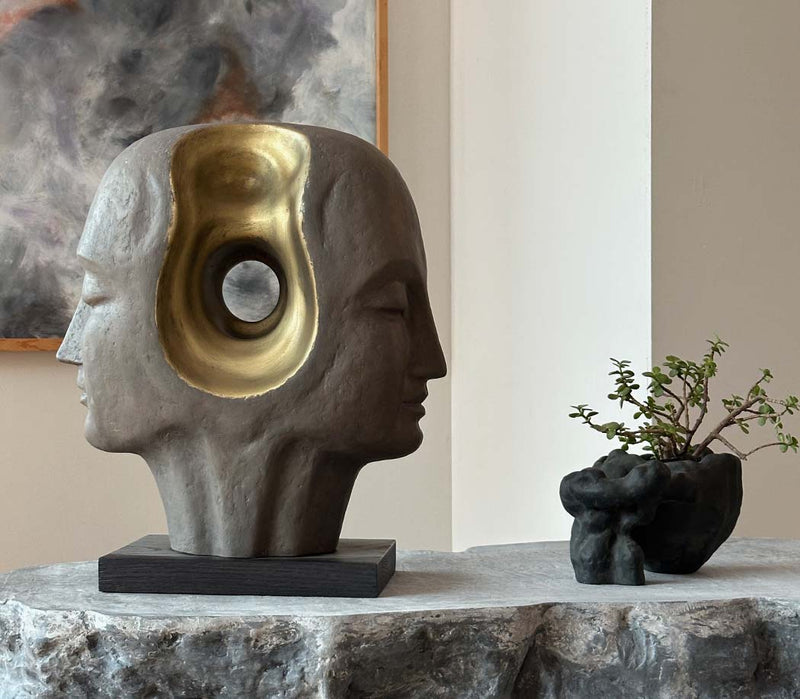Maslow's hierarchy of needs is a pyramid structure that showcases the hierarchy of human needs.
Going from bottom to top, we have:
-
Physiological layer: Basic needs of food and water, not too cold nor too hot, not sick or in pain.
-
Safety layer: Whether or not one feels okay at any moment, if their safety is in any kind of danger. One where they should feel safe.
-
Social layer: We feel more secure when we’re part of a community.
-
Self-esteem: In a community, our identity and self-esteem should be preserved.
-
Self-actualization: Now that we’ve met our basic needs, have a community where we’re safe and true, we reach our desire to be our true, authentic self–the act of self-actualization.
According to Maslow, unless and until the previous lower needs are fulfilled, the next needs cannot be catered to. For example, if a person is struggling to find food, they may not be concerned with self-esteem.
Blending Art With Maslow’s Hierarchy of Needs
Art is an act of survival and a way humans channel their needs. So, in this blog, we’ll try to envision something that was right under our noses—a blend of art with Maslow’s hierarchy of needs.
Physiological Needs: The Art of Survival
The early humans, or the cavemen, lived in scarcity of food and shelter. However, the lack of basic amenities did not stop them from creating. For generations to come, those people carved their stories on walls, enlightening us on how they survived.
This shows that art is a primal instinct; it's the tongue of visuals, the language that breaks barriers. To express their lives and survival, they relied on the whispers of the walls. Our ancestors spoke to us through art.
Safety Needs: Structure, Rituals, and Symbols in Art
Once ur basic needs are fulfilled, we move onto our next need: safety.
Safety is not just about physical security, but also about emotional security. A person could be living lavishly with security, but if they find themselves insecure about anything that causes them emotional strain, they’ll be very much focused on that.
Art has long served as a shield, a map, a sanctuary. In temples, homes, and sacred caves, human hands painted symbols not just for beauty but to invoke divine protection. Architecture itself becomes art at this stage. Homes built with care, adorned with carved doorways or painted thresholds, are not merely structures, but havens. Through centuries, art has reminded us: you are not alone, you are held, you are safe.
Love and Belonging: Art as a Mirror of Togetherness
Art has been bringing people together for centuries now. Art practiced in spirituality, as an expression of justice, to bring sentiment in people’s hearts, and to open minds and hearts. Art doesn’t just live in galleries; it lives in moments of belonging.
Art is not just about painting or sculpting, but dance and music communities have often sung notes that bind people together like sacred strings. When we surround ourselves with such art, we’re reminded of who we are, where we come from, and the bonds that hold us close.
When we practice the art of our belongings, we feel united. A strong essence of togetherness rushes within us.
Esteem: When Art Affirms Identity
As we move up Maslow’s pyramid, we start wanting recognition, not just from others but from ourselves too. That’s where art becomes a kind of statement. Someone painting their first canvas, a kid’s doodle on the fridge, a craftsman signing his sculpture—these are all ways of saying, “this is me.” this is not just for painting, drawing, or sculpting, but when a singer adapts a way of singing or the way they blend the notes becomes their identity, or when a dancer moves their body in a certain way that becomes their identity. In fact, simply practicing art is an identity in itself.
Whether you’re making art or just looking at it, it helps you feel noticed. A brushstroke starts to feel like a voice. A gallery wall feels like a little win. And it doesn’t matter if you're famous or not, if you see yourself in a piece, or if someone else sees you through it, art just makes you feel like you count. Like your story matters.
Self-Actualization: When Art Becomes a Path
Self-actualization means reaching our truest form. The desire and the need to be who we really our beneath all the layers that we wrap around ourselves in the process of fulfilling our previous needs. Many artists live here, dancing on the edge between reality and soul.
When a painter loses track of time in their studio, when a sculptor feels the clay shaping them as much as they shape it—that is art in its most sacred form. There is no audience needed here, no applause. Just the flow.
When an artist can be and can express their deepest selves onto the canvas or by the way they spin themselves through different melodies, when instead of their lips, their soul lets out a sigh or a scream through their flow. This is art.
Conclusion: A Palette for Every Need
In the end, art isn’t just something we do—it’s something we become. Whether it’s the stroke of a brush, a movement through rhythm, or a note held just long enough to make someone feel something, art is our echo. It’s the memory of who we are when the world forgets to look. It’s how we carve our names without speaking a word.
When Maslow speaks of the hierarchy of needs, that is where art rises to meet them, not as a goal, but as a journey. A quiet unraveling of all we are, all we’ve been, and all we’re still becoming. Because to create is to exist fully, and to exist fully is, in its own way, the highest art of all.

